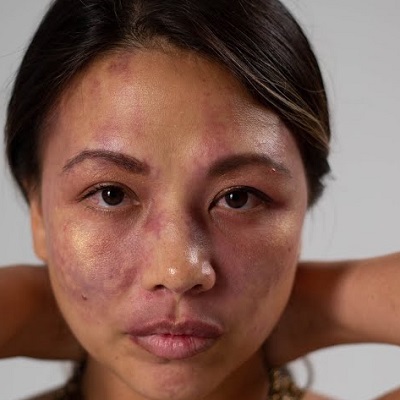Those looking to improve their facial characteristics, minimize aging symptoms, and seem younger now often choose dermal fillers. However, the method used—especially the injection depth—defines much of the success and safety of filler injections. Hence, this blog offers professional advice for obtaining the most remarkable results. Moreover, we will discuss How Deep the Filler Should Be Injected.
Understanding Dermal Fillers
Underlying the skin, dermal fillers—gels—are injected to restore lost volume, smooth lines and wrinkles, and accentuate face features. Typical forms of dermal fillers include poly-L-lactic acid, polymethylmethacrylate (PMMA), calcium hydroxyapatite, and hyaluronic acid (HA). Every kind of filler has unique qualities and is used for various regions of the face and objectives.
How Deep Should Filler Be Injected?
Several elements might affect the depth at which dermal fillers are injected. Moreover, an expert dermatologist knows better How Deep Should Filler Be Injected. Therefore, always consult with experts. However, the kind of filler, treatment region, desired result, etc.
Moreover, the following are some broad rules for many injection depths:
A Superficial Dermis:
It is suitable for fine lines and surface wrinkles.
Common areas include crow’s feet and perioral lines around the mouth.
Injecting into the superficial dermis requires accuracy to prevent obvious filler or lumps.
Middle Dermis:
Treats some mild creases and wrinkles.
Typical areas include marionette lines and nasolabial folds.
Method: guarantees consistent outcomes and equal dispersion, therefore preventing the blue discoloration known as the Tyndall effect.
Depth Dermis/Subcutaneous Layer:
Add volume and contours, then address deep wrinkles.
Typical areas include cheeks, chin, jawline, and temple.
Injecting into the deep dermis or subcutaneous layer lets one restore more notable volume and shape.
Periosteal (Bone) Level:
Goal: provide structural support and notable volume.
Typical areas: cheekbones, jawline, chin.
Deep structural support is provided by this technique, which also defines face features and produces a lifting effect.
Factors Influencing Injection Depth
Many elements affect the depth of injection for fillers, such:
Type of Filler:
hyaluronic acid (HA) is usually utilized at different depths based on the product and treatment region.
Expert injects calcium hydroxyapatite deeper as its thicker consistency makes sense.
Polylactic acid and PMMA must be injected into the deep dermis or subcutaneous layer for long-lasting effects.
Treatment Area:
Certain parts of the face need varied injection depths to achieve the desired result. For instance, fine wrinkles around the eyes require shallow injections. However, volume loss in the cheeks requires deeper injections.
Skin Thickness:
The depth of the injection also depends on the patient’s skin thickness. Therefore, thicker skin may require deeper injections to achieve a realistic appearance. However, thinner skin requires more superficial injections.
Desired Results:
Varying injection depth may change the general treatment appearance and feel. While superficial injections help smooth small wrinkles, deeper injections may provide more critical volume and support.
Importance of Expertise
The suitable injection depth is significantly influenced by the practitioner’s expertise and competence. However, an expert injector knows face anatomy, filler characteristics, and the subtleties of injection procedures. So, selecting a skilled and experienced practitioner guarantees more prosperous and safer outcomes.
Guidelines for Best Results
- Always see a qualified plastic surgeon or dermatologist to discuss your objectives. Additionally, discuss with them to decide on the appropriate filler and injection procedure for you.
- Following aftercare instructions can significantly affect the outcome of your filler therapy. Therefore, use your practitioner’s recommendations on activities to prevent and maintain the treated area.
- Be alert for typical side effects, including redness, bruising, and swelling. See your practitioner if you have unexpected or persistent symptoms.
- Arrange frequent follow-up visits to help your practitioner evaluate the outcomes and make any required changes.
Final Verdicts:
The depth with which dermal fillers should be administered is critical to achieving the intended results and guaranteeing patient safety. Knowing the many depths and their uses, as well as selecting a qualified practitioner, can help you seem naturally young. Whether you are correcting small lines or adding volume and shape, a good result depends on the suitable injection method. Therefore, a customized treatment plan can serve the purpose. catered to your particular requirements.
To find the ideal strategy for your particular objectives and skin type, always speak with a licensed expert at Royal Cosmetic Surgery-PK.




















Book Appointment